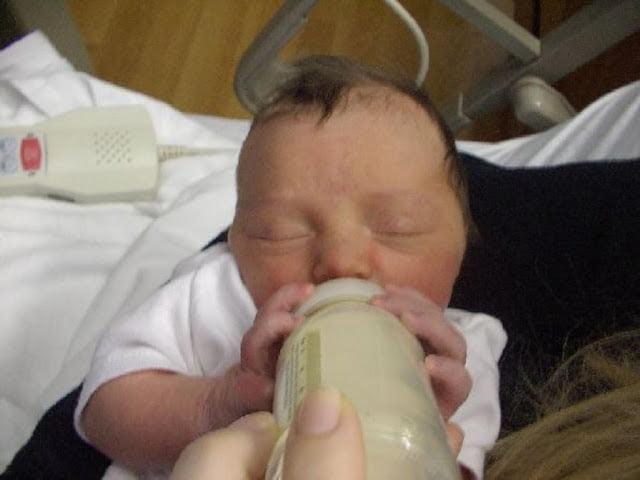In the breathtaking adventure of parenthood, witnessing a baby’s first steps is a magical and unforgettable milestone. It marks the beginning of a new phase in the child’s development and symbolizes their journey towards independence. As parents, caregivers, and observers, we often marvel at the fascinating process that leads a baby from being a tiny, helpless newborn to a little explorer taking their first steps into the world.
This comprehensive guide dives deep into the captivating world of a baby’s walking development. It explores the intricate stages, milestones, and factors that contribute to this remarkable achievement. With an engaging and informative approach, the guide aims to enlighten parents and caregivers about the complex journey their little one embarks on while learning to walk.
From understanding the foundational reflexes to delving into the impact of genetics, temperament, and environment on a baby’s walking timeline, this guide covers it all. It addresses common concerns and misconceptions, offering reassurance and guidance to parents navigating the sometimes overwhelming world of early childhood development. Moreover, it provides practical tips and advice to help parents encourage and support their child’s walking journey.
As you explore the pages of this guide, you will gain a deeper appreciation for the wonder of a baby’s first steps and the incredible process that leads up to this significant milestone. We hope that this guide not only enlightens you but also empowers you to support your child’s walking development in the best possible way. So, let us embark on this fascinating journey together, celebrating and cherishing each small triumph along the way.
Table of Contents
- Introduction: A Baby’s First Steps
- The Stages of Learning to Walk
- Factors Influencing a Baby’s Walking Timeline
- Common Concerns and Misconceptions
- Tips to Encourage a Baby’s Walking Journey
- Conclusion: A Celebration of Milestones

| Heading | Takeaway |
|---|---|
| Introduction: A Baby’s First Steps | Babies go through a fascinating journey of physical development, culminating in their first steps. |
| A Glimpse of the Magical Milestone | The first steps are a magical milestone in a baby’s life and an unforgettable moment for parents. |
| Setting the Stage: A Baby’s Physical Development | A baby’s physical development sets the foundation for their walking journey. |
| The Stages of Learning to Walk | Learning to walk involves four stages: newborn reflexes, building strength and balance, mastering mobility, and the transition to walking. |
| Factors Influencing a Baby’s Walking Timeline | Genetics, temperament, and environment are key factors that influence a baby’s walking timeline. |
| Common Concerns and Misconceptions | Addressing common concerns and misconceptions, such as early vs. late walkers, baby walkers, and seeking professional advice, can help parents better support their baby’s walking journey. |
| Tips to Encourage a Baby’s Walking Journey | Providing emotional support, engaging in activities that foster walking skills, and selecting appropriate footwear can help encourage a baby’s walking journey. |
| Conclusion: A Celebration of Milestones | Every baby’s walking journey is unique, and it’s essential to embrace the adventure and cherish the memories. |
Introduction: A Baby’s First Steps
A Glimpse of the Magical Milestone
The ephemeral nature of a baby’s first steps is a captivating spectacle, rife with a myriad of emotions for both the child and the parents. These initial strides mark the genesis of a lifelong journey, replete with exploration, autonomy, and wonder. As these diminutive pioneers navigate the uncharted terrain of their nascent world, they embark upon a path of discovery, emboldened by their newfound ability to traverse the landscape.
Witnessing this enchanting moment is akin to glimpsing the first rays of sunshine breaking through the morning mist, casting a warm, golden glow upon the landscape. It is a testament to the indomitable spirit of resilience and adaptability that underpins human development. Parents often find themselves basking in a melange of pride, joy, and awe, as they marvel at the culmination of their child’s preambulatory journey.
Yet, the fascinating phenomenon of a baby learning to walk is not merely a fleeting moment of delight. Rather, it represents the culmination of an intricate, multilayered process that encompasses myriad biological, psychological, and environmental factors. This article delves into the nuances of this awe-inspiring journey, elucidating the stages, factors, and common concerns surrounding a baby’s walking development.
Setting the Stage: A Baby’s Physical Development
Before we embark upon a comprehensive exploration of the stages of walking development, it is prudent to establish an understanding of the broader context of a baby’s physical development. The human body is an intricate symphony of interconnected systems, each performing its part in harmonious synchrony. In the context of a baby’s walking journey, the development of muscles, bones, and neural connections plays a paramount role.
From the earliest days of life, a baby’s body is engaged in a continuous process of growth and adaptation. This developmental odyssey is marked by a series of milestones, each serving as a testament to the burgeoning strength, coordination, and balance that underpin the ability to walk. As the baby’s neurological pathways mature, they facilitate enhanced communication between the brain and the muscles, paving the way for increasingly complex and coordinated movements.
In essence, the act of walking is predicated upon a delicate balance of strength, coordination, and proprioception. As we journey through the stages of walking development, we will bear witness to the remarkable metamorphosis that sees a baby evolve from a passive, dependent being to an autonomous, ambulatory adventurer.
The Stages of Learning to Walk
Stage 1: The Newborn Reflexes
As a nascent being, a newborn enters the world with a repertoire of reflexes that serve as the foundation for future motor development. These instinctual responses are the harbingers of the burgeoning neural connections that will ultimately facilitate the complex act of walking. Among these primordial reflexes, two stand out as particularly noteworthy: the rooting reflex and the Moro reflex.
Rooting Reflex: The Search for Nourishment
The rooting reflex is a survival mechanism that guides a newborn’s quest for sustenance. When a baby’s cheek is gently stroked, they instinctively turn their head towards the stimulus, mouth agape, in search of the nourishment that is vital to their growth and development. This reflex represents an early manifestation of the brain’s capacity to integrate sensory input with motor output, laying the groundwork for the development of more advanced motor skills.
As the baby matures, the rooting reflex gradually wanes, replaced by a more deliberate, volitional control over their movements. This transition is emblematic of the brain’s burgeoning capacity to orchestrate complex, purposeful actions, a critical precursor to the eventual attainment of walking proficiency.
Moro Reflex: The Startle Response
Another crucial newborn reflex is the Moro reflex, also known as the startle response. This reflex is elicited when a baby experiences a sudden change in position or a feeling of instability, such as being momentarily unsupported. In response, the baby extends their arms and legs outward, seemingly in an attempt to regain equilibrium. This reflexive action is believed to have its origins in our evolutionary history, as a means of maintaining a secure grip on a caregiver in precarious situations.
As the baby’s neuromuscular system matures, the Moro reflex gradually subsides, giving way to more sophisticated, conscious control over their movements. The fading of this reflex signifies the ongoing refinement of the brain’s ability to coordinate and regulate the body’s motor functions, a vital precursor to the emergence of walking skills.
Stage 2: Building Strength and Balance
As a baby’s neurological pathways continue to develop and their reflexes begin to wane, they embark upon a journey of strength-building and balance-honing. This phase of development is characterized by two pivotal milestones: tummy time and sitting up.
Tummy Time: Developing Head and Neck Control
Tummy time is a crucial component of a baby’s motor development, as it fosters the growth of the muscles responsible for head and neck control. By placing a baby on their stomach for brief periods, parents encourage the baby to lift their head and engage their upper body muscles. This seemingly innocuous activity is, in fact, a vital precursor to more advanced motor skills, as it lays the foundation for the strength and coordination required for walking.
As the baby perseveres with tummy time, they gradually develop the ability to push up onto their hands and knees, a critical stepping stone towards the emergence of crawling. This newfound strength and balance pave the way for a thrilling new chapter in the baby’s journey towards ambulation.
Sitting Up: Establishing the Core
Another significant milestone in a baby’s motor development is the attainment of sitting up independently. This feat requires a robust core, as well as the balance and coordination necessary to maintain an upright posture. As a baby learns to sit, they cultivate a newfound perspective on their environment, affording them an opportunity to engage more actively with the world around them.
This enhanced engagement serves to further fuel their motor development, as they become increasingly motivated to explore and interact with their surroundings. As the baby’s core strength and balance continue to flourish, they are well-equipped to embark upon the next phase of their walking journey: mastering mobility.
Stage 3: Mastering Mobility
With the foundations of strength and balance firmly established, a baby is poised to tackle the exciting realm of mobility. This stage is marked by two pivotal milestones: crawling and pulling up.
Crawling: The Baby’s First Mode of Transportation
Crawling represents a seminal moment in a baby’s motor development, as it affords them their first taste of autonomy and exploration. Propelled by their burgeoning strength and coordination, these fledgling explorers traverse the landscape with a sense of awe and curiosity, driven by an insatiable desire to uncover the mysteries that lie just beyond their reach.
As the baby navigates their environment, they hone their spatial awareness, balance, and proprioception, all of which are essential ingredients in the eventual attainment of walking proficiency. In essence, crawling serves as a vital training ground for the complex motor skills required for walking, paving the way for the thrilling transition that lies just ahead.
Pulling Up: Conquering the Vertical Plane
Pulling up represents a momentous leap in a baby’s motor development, as they conquer the vertical plane and assume a standing position. This achievement is predicated upon the culmination of their burgeoning strength, balance, and coordination, as they deftly navigate the complexities of gravity and equilibrium.
As the baby practices pulling up, they continue to refine their motor skills, laying the groundwork for the final stage in their walking journey. With each triumphant ascent, they edge ever closer to the ultimate goal: taking their first unassisted steps.
Stage 4: The Exciting Transition to Walking
Having mastered the art of mobility, a baby is now primed for the thrilling transition to walking. This final stage is characterized by two key milestones: cruising and supported steps.
Cruising: The Art of Sidestepping
Cruising signifies the dawn of a baby’s walking journey, as they begin to sidestep along furniture and other sturdy surfaces. As these intrepid adventurers traverse the landscape, they hone their balance, coordination, and spatial awareness, inching ever closer to the milestone that lies just beyond the horizon: their first unassisted steps.
With each tentative stride, the baby continues to refine their motor skills, building the confidence and proficiency required to embark upon the next phase of their journey: walking independently.
Supported Steps: The Power of a Helping Hand
As a baby’s walking skills continue to blossom, they often seek the assistance of a caregiver or parent, who offers a guiding hand to support their burgeoning efforts. These supported steps serve as a vital bridge between cruising and independent walking, affording the baby an opportunity to refine their balance, coordination, and proprioception in a secure and supportive environment.
With each successful step, the baby’s confidence swells, propelling them ever closer to the ultimate goal: walking unassisted. As the baby continues to practice and refine their skills, they gradually wean themselves from the need for support, taking their first triumphant steps into the realm of independence.
Factors Influencing a Baby’s Walking Timeline
Genetics: The Role of Family History
While every baby’s walking journey is unique, it is important to recognize that certain factors can influence the timeline of this momentous milestone. One such factor is genetics. A baby’s genetic heritage can play a significant role in determining the pace of their motor development, as certain genetic traits can predispose an individual to develop strength, balance, and coordination at a faster or slower rate than their peers.
It is not uncommon for parents to observe similarities in the walking timelines of their children, as well as between their own walking milestones and those of their offspring. While it is important to acknowledge the influence of genetics on a baby’s motor development, it is equally vital to recognize that each child’s journey is a unique tapestry, woven from the threads of myriad biological, psychological, and environmental factors.
Temperament: The Impact of Personality on Progress
Another factor that can influence a baby’s walking timeline is temperament. A child’s personality can play a significant role in determining the pace of their motor development, as it can shape their motivation, persistence, and resilience in the face of challenges.
For example, a more cautious or reserved child may be slower to embrace the thrills and spills of walking, preferring to take their time and approach new challenges with a measured, deliberate approach. Conversely, a more adventurous or tenacious child may be eager to tackle the challenges of walking head-on, spurred by an insatiable curiosity and drive to explore their environment.
As a parent or caregiver, it is important to recognize and respect the influence of temperament on a baby’s motor development, offering support, encouragement, and patience as they navigate their unique journey towards walking proficiency.
Environment: Creating a Supportive Space for Learning
The environment in which a baby develops can also play a significant role in shaping their walking timeline. A supportive, stimulating environment can foster motor development by offering ample opportunities for exploration, experimentation, and practice.
Factors such as the availability of age-appropriate toys, the presence of other children, and the level of parental engagement can all contribute to a baby’s motor development. By cultivating a nurturing, responsive environment, parents and caregivers can empower their little ones to reach their full potential and embrace the joys of walking with confidence and enthusiasm.
Common Concerns and Misconceptions
Early Walkers vs. Late Bloomers: Does Timing Matter?
One common concern among parents and caregivers is the timing of a baby’s walking milestones. While it is natural to wonder whether early walking is indicative of advanced development or if late walking is a cause for concern, it is important to recognize that the timeline of a baby’s walking journey is influenced by a multitude of factors, many of which are beyond their control.
In reality, the timing of a baby’s first steps has little bearing on their long-term development. Rather than fixating on arbitrary timelines, parents and caregivers are encouraged to focus on supporting their child’s unique journey, celebrating their progress, and fostering a love of exploration and learning.
Baby Walkers: Helpful Tool or Hindrance?
Baby walkers are a contentious topic among parents and experts alike, with some lauding their benefits as a tool for promoting walking, while others decry their potential to impede motor development. In truth, the efficacy of baby walkers is largely dependent on the individual child and the manner in which the device is employed.
When used judiciously and under close supervision, baby walkers can offer a measure of support and encouragement to a child who is learning to walk. However, excessive reliance on such devices can hinder a baby’s development of crucial skills, such as balance, coordination, and proprioception. As with all aspects of child-rearing, moderation is key.
When to Seek Professional Advice: Recognizing Potential Delays
While it is important to remember that every baby’s walking journey is unique, there may be instances where professional guidance is warranted. Potential red flags include an absence of key motor milestones, such as sitting independently or crawling, by a certain age, or a sudden regression in previously acquired skills.
If you have concerns about your child’s motor development, it is prudent to consult with a healthcare professional, who can offer guidance, reassurance, and, if necessary, intervention to support your child’s journey towards walking proficiency.
Tips to Encourage a Baby’s Walking Journey
Praise and Positivity: The Importance of Emotional Support
As a parent or caregiver, your emotional support is an invaluable resource in fostering your baby’s walking journey. By offering praise, positivity, and encouragement, you can bolster their confidence and motivate them to tackle new challenges with enthusiasm and determination.
Remember to celebrate even the smallest of milestones, as these seemingly inconsequential achievements serve as vital building blocks in your baby’s overall motor development. Your unwavering support and belief in their abilities can have a profound impact on their progress and self-esteem.
Playtime Fun: Engaging Activities to Foster Walking Skills
Playtime serves as a powerful catalyst for a baby’s motor development, as it affords them an opportunity to practice their emerging skills in a fun, engaging environment. By incorporating a variety of age-appropriate activities into your baby’s daily routine, you can help to foster their walking proficiency.
Some ideas include encouraging your baby to reach for toys while sitting or standing, engaging in interactive games such as peekaboo or chase, and providing opportunities for your child to explore different surfaces and environments. The key is to strike a balance between challenge and enjoyment, ensuring that your baby remains motivated and engaged throughout their walking journey.
Footwear Facts: Choosing the Right Shoes for a Baby’s First Steps
As your baby begins to take their first steps, it is essential to select the appropriate footwear to support their burgeoning skills. The ideal shoe should be lightweight, flexible, and breathable, with a non-skid sole to provide traction and stability.
While it may be tempting to opt for rigid, high-ankle shoes in the belief that they offer superior support, research suggests that more flexible footwear is preferable, as it allows the baby’s foot to move naturally and develop the strength and coordination required for walking proficiency. Ultimately, the goal is to find a shoe that strikes the perfect balance between protection and freedom of movement, enabling your baby to embark upon their walking journey with confidence and ease.
Conclusion: A Celebration of Milestones
Every Baby’s Journey Is Unique
As your baby embarks upon their walking journey, it is vital to remember that each child’s path is unique, influenced by a myriad of biological, psychological, and environmental factors. Rather than comparing your baby’s progress to that of their peers, focus on celebrating their individual milestones and fostering their love of exploration and learning.
By offering your unwavering support, encouragement, and patience, you can empower your little one to reach their full potential and embrace the wonders of walking with confidence and enthusiasm.
Embracing the Adventure: Cherishing the Memories
As your baby takes their first steps, remember to cherish the memories and experiences that accompany this momentous milestone. While it may be easy to become preoccupied with developmental timelines and milestones, it is important to recognize that your baby’s walking journey is a precious, fleeting chapter in their life, one that will be gone in the blink of an eye.
By embracing the adventure, savoring the triumphs and challenges, and focusing on the joys of exploration and discovery, you can ensure that your baby’s walking journey is a cherished, unforgettable experience for you both.
FAQ
Q1: What factors can influence the timeline for a baby learning to walk?
A1: The timeline for a baby learning to walk can be influenced by factors such as genetics, temperament, and environment. Family history, individual personality traits, and the child’s surroundings all play a role in determining when a baby will start walking.
Q2: How do a baby’s unique temperament and personality impact their walking progress?
A2: A baby’s temperament and personality can significantly impact their walking progress. For example, a cautious child might be more hesitant to take risks and attempt walking, while a more adventurous or tenacious child may be eager to explore and push the boundaries of their mobility.
Q3: Are there specific milestones to track a baby’s walking journey?
A3: Yes, there are several milestones that can help track a baby’s walking journey, such as sitting independently, crawling, pulling up to stand, cruising, and finally taking their first steps. Each baby’s progress will vary, so it’s important to remember that every child develops at their own pace.
Q4: When should parents consider seeking professional advice for their child’s walking development?
A4: Parents should consider seeking professional advice if they notice an absence of key motor milestones by a certain age, a sudden regression in previously acquired skills, or if they have concerns about their child’s overall motor development.
Q5: How can parents support their baby’s walking journey?
A5: Parents can support their baby’s walking journey by offering emotional support, engaging in age-appropriate activities that foster walking skills, and choosing the right shoes for their baby’s first steps. Praise, positivity, and patience are essential in this process.
Q6: Do baby walkers help or hinder a child’s walking development?
A6: The efficacy of baby walkers depends on the individual child and how the device is used. When employed judiciously and under close supervision, baby walkers can offer support and encouragement. However, excessive reliance on them can impede the development of crucial skills such as balance and coordination.
Q7: Is there a significant difference between early walkers and late bloomers in terms of long-term development?
A7: No, the timing of a baby’s first steps has little bearing on their long-term development. Instead of focusing on arbitrary timelines, parents should concentrate on supporting their child’s unique walking journey and celebrate their progress.








